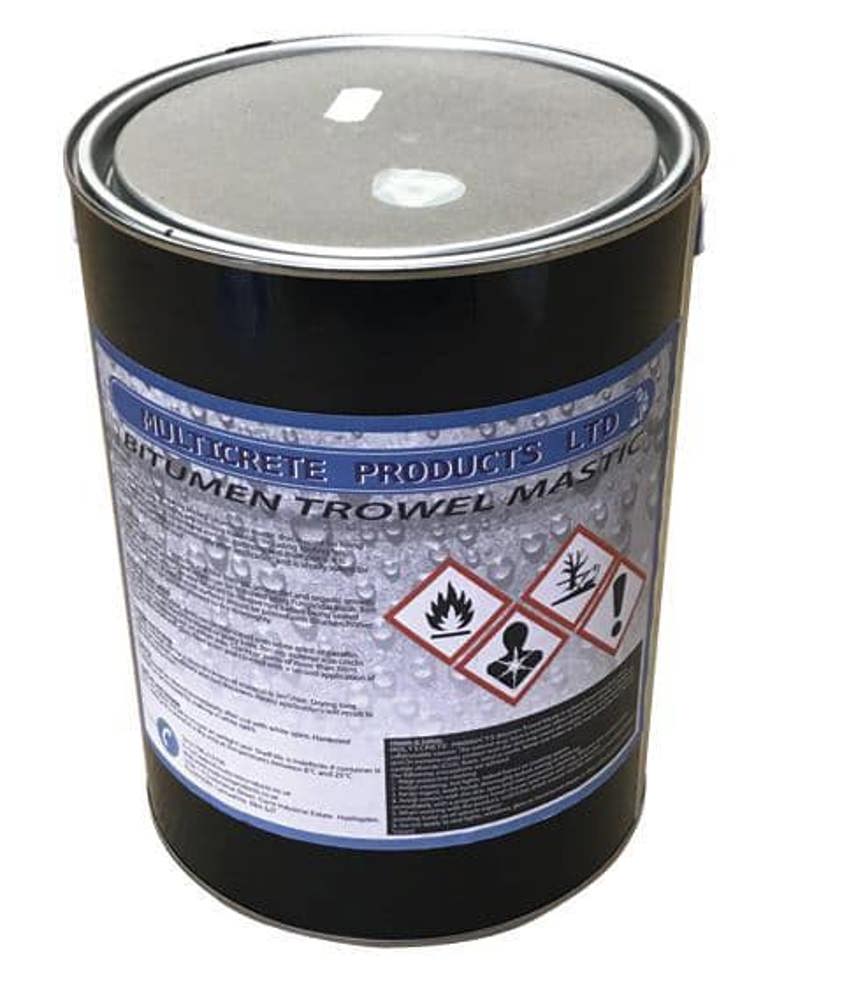Bitumen Trowel Mastic is a heavily bodied bituminous mastic that is used for filling joints, cracks and splits in roofing and building materials including roofing felt, asphalt, concrete, asbestos cement and metallic guttering and drainpipes. It is resistant to water penetration immediately after application and is ideally suited for maintenance and remedial work.
Preparation
Ensure that the surface is clean, dry and free from oil, grease dirt and organic growth. Organic growth such as moss and lichen can be removed using Fungicidal Wash. Bolt heads on roof sheets should be wire brushed to remove rust before being sealed with Bitumen Trowel Mastic. Porous surfaces should be primed with Bitumen Primer in order to seal the surface and allowed to dry thoroughly.
Method of Application
In order to assist application, tools can be lubricated with white spirit or paraffin. Apply Bitumen Trowel Mastic by trowel or putty knife, forcing material into cracks and joints and smoothing out on either side. Cracks or joints of more than 3mm should be reinforced with glass fibre scrim and covered with a second application of mastic.
Coverage and Drying
A typical coverage rate for a 2mm thickness of material is 2m²/litre.
Drying time depends on weather conditions and film thickness. Heavy applications will result in extended drying times.
Cleaning
All tools should be cleaned immediately after use with white spirit. Hardened material can be removed by soaking in white spirit.
Shelf Life and Storage
After use replace the lid to ensure an airtight seal. Shelf life is indefinite if container is kept sealed and is stored in a dry area at temperatures between 8°c and 25°c.
Health & Safety
Multicrete Bitumen Trowel Mastic is solvent based and gives off an inflammable vapour. The solvent may have a narcotic effect if inhaled or absorbed through the skin. In extreme cases contact with the skin may cause dermatitis. In case of fire use dry powder, carbon dioxide (CO2), foam, sand or earth. Never use water as this may spread the fire. Therefore the following precautions are advised:
1. Wear protective clothing
2. Avoid smoking, hot lights, naked flames or creating sparks
3. Never ingest, wash hands thoroughly before eating or drinking
4. Avoid contact with the skin, eyes and non protective clothing. Remove skin contamination immediately with a proprietary hand cleaner and wash with soap and water.
5. When working with the product, until it has dried, ensure that the area is well ventilated thereby avoiding build up of solvent vapour.
6. Do not apply to roof lights, windows, glass or translucent sheets as they will constitute a hidden hazard
